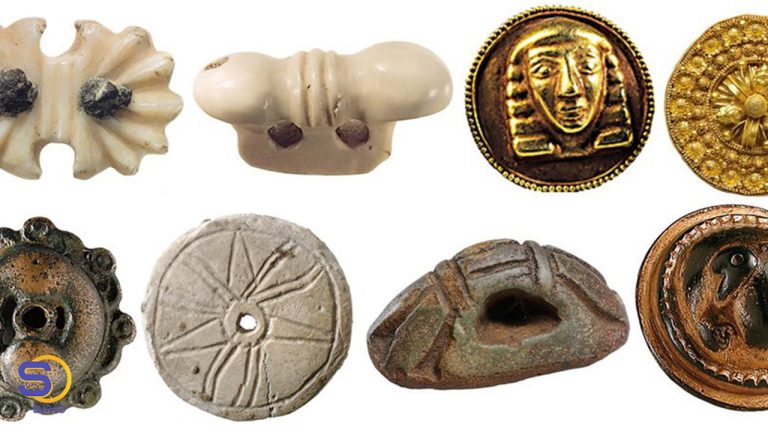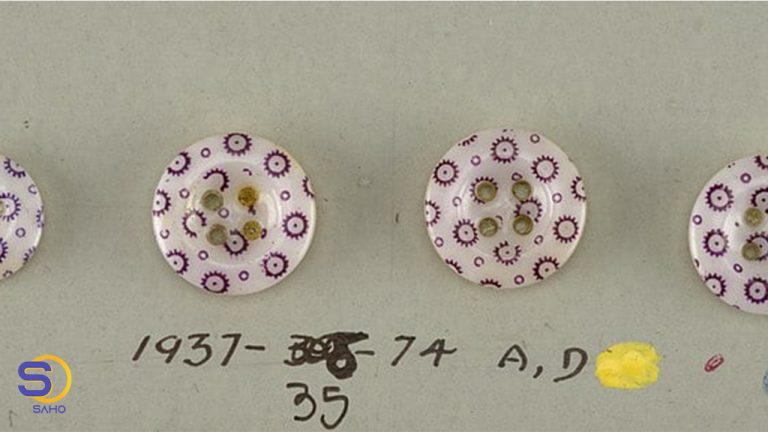Button History

The History of the Button In our fast-paced modern lives, where trends come and go overnight, we can often take the most basic things for granted. We’re big fans of the little details here and believe we should give them the tribute they deserve. With that in mind, we thought we’d take a look at the unsung hero of any outfit: the button.
Where did the buttons come from? Who was the first to discover this essential, often overlooked part?
History
The Indus Valley civilization is known for the invention of the button. The first button that exists today dates back to around 2000 BC and was made from a curved shell. The first buttons were used as decorative decorations for people’s clothing, which was a sign of their wealth or status.

Buttons had small holes on their surfaces and were attached to the garment with thread, often forming geometric patterns rather than the straight lines we know today. Over the centuries, the button was used more and more as a fastener for clothes. For example, the ancient Romans used it to pin clothes in place.

Over the centuries, the button evolved from a decorative item to a more functional item. The Middle Ages brought with it the all-important invention of the buttonhole, which was to quietly revolutionize clothing. The very simple but elegant and geometric design allowed the button to pass through the gap and fit firmly in place. However, it was a long time before the invention of the buttonhole and functional button as we know it today.
18th century
The 18th century is considered by collectors to be the golden age of buttons. Because the variety of styles as well as the physical size of the buttons increases dramatically. Men’s jackets require buttons on the front, sleeves, pockets, and back slits. Vests and pants were also closed with buttons. The size of the button grows and its shape generally flattens over the course of the century and becomes flat. The value of the embellishments of a men’s ensemble during this period, which includes metallic thread embroidery and jeweled buttons, can account for 80 percent of the cost of a suit. Thus, luxurious buttons became an important part of showing wealth status in upper-class men’s clothing.

Buttons continued to be worn by the wealthy and aristocracy for years to come. It wasn’t until the mass production of the Industrial Revolution that buttons became a ubiquitous staple. Its shape was smoothed and four holes were created on its surface. This means that it can be attached to clothes quickly and easily.

As the button changed from a ball to a flat surface, another significant change in decorative technique was the use of the button as a palette for painting. Dramatic pictures and miniature portraits, which were worn as pendants or brooches, became very popular in the second half of the 18th century.

19th and 20th century
military uniform
The standardization of military uniforms in 18th-century Europe led to the production of specialized buttons, which are still a major part of the button industry today. The number of buttons required for a soldier’s coat can be between twenty and thirty. Each country, region, and specialty within the armed forces required its own individual designs. Of course, uniform buttons carried over to civilian life as well, as modern businesses such as airlines and local law enforcement agencies required special buttons for their uniforms.

Today, buttons come in a wide variety of colors and shapes, but the flat, round shape is still the most popular. In traditional sewing, the horn button is usually preferred. But in recent years, we have seen an increase in its replacement with other buttons, such as the corozo button. This button is made from the seed of the Kuroso tree and because each seed is different, each button is completely unique like a fingerprint.

Buttons competed with the zipper, which was patented in 1903 but didn’t come into general use until the 1930s. In the beginning, the zipper was considered a novelty and played a prominent role as decoration in the designs of top designers.
The use of stretchy fabrics and increasingly casual clothing has led to a decrease in demand for button fasteners. They have become a symbol of nostalgia and timeless traditions. Gone are the retro button-up jeans introduced by denim manufacturers in the 1990s, or the continued use of rows of small buttons on the back of wedding dresses.
In the end, it can be said that the button is an essential member; But most of the time it has been neglected or neglected.
You can see this and similar contents on our Instagram page.
Saho Style on Social Media
- Instagram: @sahostyleinternational
- Youtube: SahoStyle



0 Comments